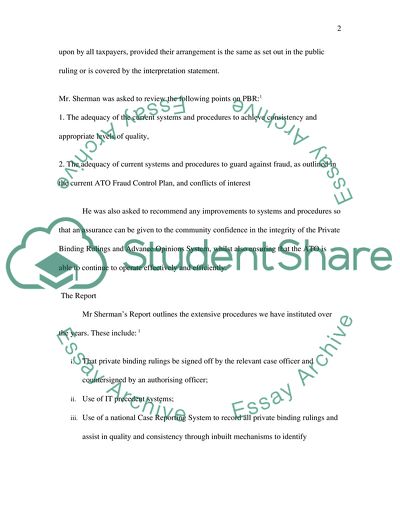Cite this document
(Taxation- Private Binding Rulings Assignment Example | Topics and Well Written Essays - 3000 words, n.d.)
Taxation- Private Binding Rulings Assignment Example | Topics and Well Written Essays - 3000 words. Retrieved from https://studentshare.org/law/1721938-taxationcurrent-topic-private-binding-rulings
Taxation- Private Binding Rulings Assignment Example | Topics and Well Written Essays - 3000 words. Retrieved from https://studentshare.org/law/1721938-taxationcurrent-topic-private-binding-rulings
(Taxation- Private Binding Rulings Assignment Example | Topics and Well Written Essays - 3000 Words)
Taxation- Private Binding Rulings Assignment Example | Topics and Well Written Essays - 3000 Words. https://studentshare.org/law/1721938-taxationcurrent-topic-private-binding-rulings.
Taxation- Private Binding Rulings Assignment Example | Topics and Well Written Essays - 3000 Words. https://studentshare.org/law/1721938-taxationcurrent-topic-private-binding-rulings.
“Taxation- Private Binding Rulings Assignment Example | Topics and Well Written Essays - 3000 Words”, n.d. https://studentshare.org/law/1721938-taxationcurrent-topic-private-binding-rulings.


